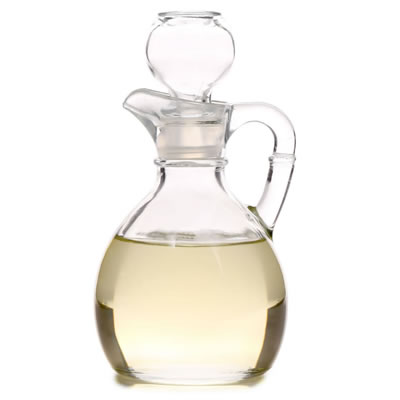Origin
It is known by chemists as ethanoic acid, having 1-carbon (methyl group) linked to a functional carboxylic group. Its chemical formula is CH3COOH. Acetic acid is produced in large-scale chemical plants through bacterial fermentation.
Commercial production
Acetic acid can be obtained by fermentation and/or by chemical synthesis.
- Biotechnological synthesis: Acetobacter aceti converts ethanol to acetic acid under aerobic conditions.
- Chemical synthesis: Oxidation of acetaldehyde, and reaction of carbon monoxide with methanol.2
Function
In the baking industry it functions for/as:
- Acidulant by lowering pH
- Antimicrobial agent
- Shelf-life extension
- Flavoring agent in yeast-leavened products
- Leavening agent, if used in conjunction with baking soda in chemically-leavened products such as refrigerated canned dough, pancakes and biscuits
- Sanitizer, as it can be used in solution with water to sanitize stainless steel equipment
Application
Due to the clean label movement and consumers demand for healthier bakery products, bakers around the world prefer to avoid chemical preservatives for their baked goods. This acid is a great alternative. It can be added in the form of a 12.5% vinegar for the production of bread at levels of 0.6–0.9 % (Baker’s %).2
- It is less efficient in inhibiting mold growth than traditional calcium propionate so adjustments in formula need to be made if similar effects are required.
- When using vinegar instead of acetic acid, care must be paid since the concentration of acid is much higher.
- Maximum recommended inclusion of this acid in bakery products and baking mixes is 0.25%.1 Higher values may compromise the sensory features of finished products such as flavor and aroma.
- If used for extending the shelf life of finished-products, remember that optimum results can only be achieved if high levels of plant hygiene are maintained. This means that food-contact surfaces, equipment, personnel and ingredients must conform with stringent food safety and quality measures. It is essential that air be filtered to prevent airborne contamination after baking and cooling.
- It is important to remember that acetic acid does not destroy microorganisms. It can only inhibit or limit spoilage in products (depending on the microbial load).2
FDA regulation
According to CFR 21 § 184.1005, acetic acid is GRAS for miscellaneous and general-purpose usage in the USA with no limitation other than current good manufacturing practices.3
References
- Smith, J. “Acidulants” Food Additives Data Book, 2nd edition, Blackwell Publishing Ltd., 2011, pp. 2–5.
- U.S. Food and Drug Administration. “21 CFR 184 – Direct Food Substances Affirmed As Generally Recognized As Safe.” 1 Apr. 2017, https://www.accessdata.fda.gov/scripts/cdrh/cfdocs/cfcfr/CFRSearch.cfm?CFRPart=184.
- Cauvain, S.P. “Functional Ingredients” Technology of Breadmaking, 3rd edition, Springer International Publishing Switzerland, 2015, pp. 73–74.

